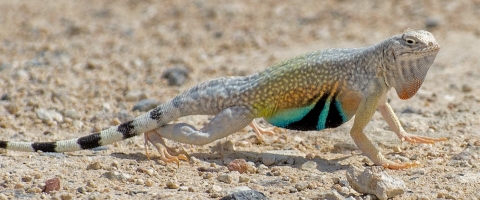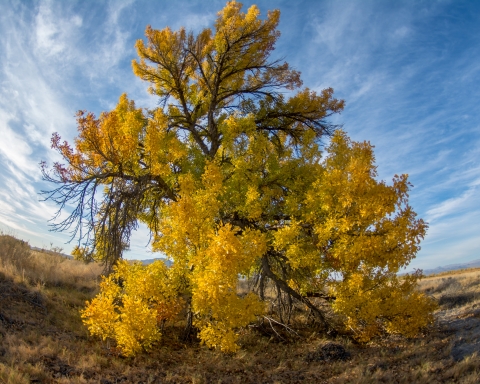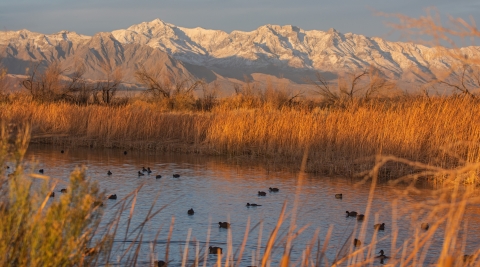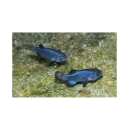Seasons of Wildlife
Spring
In late March the weather warms up and splashes of color begin to appear across the desert landscape. Ash Meadows is one of the few locations in the desert that has flowers blooming throughout the year and not just in the spring. Although we can't compete with the flower display in Death Valley after an unusually wet winter, our flowers are beautiful and unique.
In the spring the birds begin to migrate to the north. The refuge becomes host for these weary travelers and for the birders who flock to see them.
Lizards become more active and easily noticed as they scurry along the boardwalks. The pupfish males, especially in Kings Pool, become even more blue which helps attract a mate.
Summer
It is lush and green in the summer but remember: It's HOT! Be prepared. Temperatures can be over 120° (F) and beginning mid-day animals like this Zebra tailed lizard seek shade. The coolest time of the day is early mornings and don't be fooled thinking it cools off toward evening. The hottest time of the day is 4:00 - 5:00 p.m.
Fall
Fall colors in the desert? It's true. Ash Meadows name sake, the leather-leaf ash can put on a spectacular display of orange and gold especially around Crystal Reservoir. Fall is a good time to visit the refuge, the weather is nice, the refuge is still green and our feathered friends have stopped for a rest on their way south for the winter. Wildlife abounds and you may see a herd of desert bighorn sheep or a bobcat.
Winter
During the winter months the refuge can appear to be a desolate place. The trees are bare, the grasses are brown and most of the animals are still in their winter sleep. But winter is an opportunity to see a different side of the refuge. The pupfish still frolic in brilliant Caribbean blue waters and on cold winter mornings the steam rising from the warm springs gives the refuge a mystical feel.
Featured Species
| ||||||||||||||||||||||||||||||||||||||||||||||||||||||||||||||||||||||||||||









